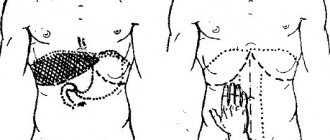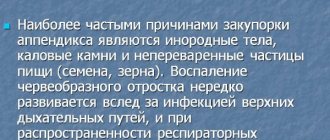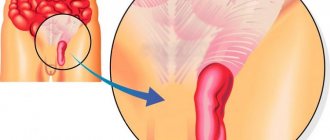What is pork tapeworm? The pork tapeworm (Taenia solium), also known as the pork tapeworm, or the armed tapeworm, is a tapeworm that is a parasite of mammals.
Its final owner can only be a person, and dogs, hares, rabbits and camels also act as intermediate hosts, along with domestic and wild pigs.
What to do in such a situation? To get started, we recommend reading this article. This article describes in detail methods of controlling parasites. We also recommend that you consult a specialist. Read the article >>>
Depending on the stage of development of the pork tapeworm at which infection with this parasite occurred, a person may develop:
- taeniasis, if there is an adult parasite in his body;
- cysticercosis, if eggs or cysticerci (the so-called larvae of this worm) have entered the body.
Cysticercosis is considered a complication of taeniasis. This disease develops when pork tapeworm in the form of eggs enters the human gastrointestinal tract.
Gastric juice dissolves their dense shell, and with the bloodstream, the embryos of the worm enter various human organs.
The main distribution area of taeniasis is in regions and countries with developed pig production. Thus, in China, Taiwan, India and South Korea, African and Latin American countries, the number of pigs that have pork tapeworm is more than a third.
Knowing who the intermediate host is, it is not difficult to imagine the prevalence of taeniasis among the local population.
The structure and life cycle of pork tapeworm
The pork tapeworm can reach a length of up to 4 m. Its flat, “ribbon-like” white body consists of a scolex and many small segments - segments, the number of which can reach up to a thousand.
The scolex is the head part with fixation organs - four muscle suckers.
A special feature of the parasite is the presence of two rows of hooks on its body (there are more than 30 of them); Apparently, this is why it is called an “armed tapeworm.”
In a close-up photo, the pork tapeworm, at least its “head end” (scolex), looks like a cute soft children's toy, but the whole specimen is disgusting.
In the segments of the “tail part” there is an ovary with eggs containing an oncosphere (this is the name of the formed embryo of this parasite).
The number of eggs is huge - it can reach up to 50 thousand. Segments with eggs are able to separate from the body as they develop and come out along with the feces of the owner.
There they enter the body of the intermediate host along with food, the shell of the eggs in the stomach is destroyed, and the oncospheres are spread to all organs and tissues, settling mainly in the intermuscular connective tissue.
After 60-70 days, larvae - cysticerci, or fins - are formed from the oncospheres. The cysticercus itself is a vesicle with a clear liquid with a diameter of 3-15 mm, to the inside of which is attached a tiny head of the future pork tapeworm.
Although Finns remain viable in the human body for up to 17 years, they are not resistant to very high or very low temperatures.
If a piece of meat contaminated by them is kept for at least an hour at a temperature of +80°C during cooking, then they will be neutralized.
Freezing pork carcasses infected with Finns for 10 days and keeping them at a temperature of at least minus 12-15°C also neutralizes Finns.
In humans, infection occurs when eating raw or semi-raw meat that has not undergone sufficient heat treatment and contains Finns, from which mature pork tapeworm develops in the intestines.
Its main habitat is the small intestine. 2 months after the Finns, along with the infected meat, reach the final host, sexually mature segments containing eggs already appear in it. The eggs are released again in the feces, and the development cycle begins again.
Pathogenesis
The impact of pork tapeworm on the human body is due to a number of pathogenic factors.
- Toxic-allergic effect. Like any other helminth, the pork tapeworm, as a result of its vital activity, produces toxins that poison the host’s body. In response to foreign agents, the immune system is activated and an allergic reaction is triggered.
- Mechanical action. Pork tapeworm affects the mucous, submucosal and sometimes even the muscular layer of the small intestine. By injuring this organ, it disrupts the natural physiological processes of the digestive tract: it negatively affects intestinal motility and the absorption of digested food.
- Debilitating effect. The helminth is a competitive consumer of nutrients and microelements, the absorption of which occurs in the small intestine of the host. As a result, the nutrition of the tissues of the human body is disrupted and their gradual depletion occurs.
Pork tapeworm infection
Infection with pork tapeworm occurs through the alimentary, that is, fecal-oral route: parasite eggs are released from the body of a patient with taeniasis into the external environment and, through intermediate hosts (mainly through meat), enter the body of another person - this is how pork tapeworm is transmitted from person to person, not directly, but indirectly.
In this case, cysticercosis occurs because the pork tapeworm is in the larval stage. If personal hygiene rules are not followed, self-infection is possible.
Take a pork tapeworm test
Prevention methods
Prevention of infection with pork tapeworm involves strict adherence to a few simple rules.
- Wash your hands thoroughly before eating.
- All vegetables should be washed several times with boiling water.
- Pay maximum attention to the choice of meat.
Before purchasing, the product must be carefully inspected - white spots on the pig's liver or other organ indicate the presence of parasites. Such meat should be abandoned. These simple rules will help prevent infection with worms and relieve many health problems.
What is the difference between bovine tapeworm and pork tapeworm?
Although the size of the pork tapeworm is smaller than that of the bovine tapeworm (it reaches up to 10 m), the pork tapeworm is more dangerous due to its hooks - the bovine tapeworm does not have them.
Although the eggs of both parasites are similar in appearance, in the pork tapeworm they are infectious to humans, but in the bovine tapeworm they are not.
The main way to distinguish these parasites in the laboratory is by the end segments, which are elongated in the pork tapeworm; in addition, they have an ovary with a third (accessory) lobule.
Laboratory analysis is necessary to select treatment tactics, since there are differences depending on the type of parasite.
Taeniasis
Taeniasis is a disease caused by mature pork tapeworm, which parasitizes the patient’s intestines. Symptoms in humans are as follows:
- the appearance of allergic reactions due to the toxic-allergic effects of the parasite on the body;
- inflammation of the intestinal mucosa due to mechanical irritation caused by hooks attached to it;
- astheno-neurotic syndrome with headaches, dizziness, fainting, increased nervousness) due to a deficiency of nutrients that the pork tapeworm absorbs;
- dyspepsia, loss of appetite, discomfort in the intestines after eating, belching;
- abdominal pain of varying intensity.
The organs affected by taeniasis are mainly the digestive system.
To identify signs of the parasite, laboratory diagnostics are performed after an epidemiological history:
- fecal analysis for the presence of end segments (strobilae) of the pork tapeworm, which are not able to crawl out of the host’s body on their own;
- ovoscopy of perianal scraping - for the same purpose;
- blood test: general and for specific antibodies of pork tapeworm;
- coprogram;
- radiography and fluoroscopy.
Symptoms of the disease
Clinical manifestations of the disease depend on the location and stage of tapeworm development.
Signs characteristic of taeniasis indicate the habitat of an adult:
- headaches, dizziness, insomnia, anxiety. Such conditions can cause a lack of micronutrients (vitamins, minerals). The parasite consumes nutrients, depriving the host, while its waste products poison the human body with toxins;
- dyspeptic symptoms from the digestive tract are associated with the movement of the helminth through the intestines;
- skin lesions are manifested by rashes, itching, deterioration of complexion;
- Nasal congestion is allergic in nature.
It should be noted that the course and prognosis of taeniosis is more favorable.
Treatment of taeniasis
Treatment of taeniosis is carried out only in a hospital in order to exclude the occurrence of cysticercosis due to the destruction of the egg shell and the entry of oncospheres into the circulatory system.
Treatment includes:
- strict adherence to a diet with reduced energy value (table No. 13) and 4-5 meals a day;
- the use of medications to expel the parasite: biltricide - a one-time dose to paralyze the parasite, which will not be able to cling to the intestinal walls and will be released during defecation;
- treatment with folk remedies: male fern extract and pumpkin seeds (have a similar effect).
Self-medication can cause cysticercosis, so you must strictly follow your doctor's instructions. Drugs that cause the collapse of strobili are contraindicated.
The diet is quite strict and includes the exclusion of fatty, smoked, canned foods, sour cream, cheeses, pasta, fiber-rich fruits, a number of vegetables (onions, garlic, white cabbage, etc.), fresh bread and baked goods, some cereals, chocolate, etc.
It is recommended to include low-fat and low-fat foods in the diet, pureed porridge (rice, buckwheat, semolina), cottage cheese and lactic acid drinks, some vegetables (carrots, beets, potatoes, ripe tomatoes, cauliflower), ripe fruits, etc.
Medications and folk remedies are combined with laxatives and cleansing enemas, which are carried out according to the regimen prescribed by the doctor.
How a worm emerges from a person is not a pleasant sight, but after this it must be examined for integrity so that there are no end segments left in the intestine. That is why treatment of diseases caused by pork tapeworm is carried out in a hospital.
After expulsion of the parasite, the patient is under clinical observation and undergoes a stool test every month for 4 months.
Cysticercosis
Unlike tyneosis, which occurs due to a sexually mature parasite, cysticercosis is caused by larvae of the pork tapeworm.
When they enter the gastrointestinal tract, their shell dissolves, with the help of hooks they are attached to the intestinal mucosa, and then seep into the bloodstream and spread throughout the body.
Their location can be the eyes, lungs, heart, skin, brain and spinal cord; The symptoms and treatment of the disease also depend on this.
The development of larvae causes an increase in their size, and pressure on neighboring cells may cause pain in the host, and their waste products have a toxic effect.
But even if the pork tapeworm dies at this stage, the dissolution (leasing) of its body causes the release of particularly dangerous substances, often causing allergic shock, which is fatal in 20% of cases.
If the body of a dead worm becomes calcified, then inflammatory processes in the organs affected by it will still continue. Thus, the problem is not only how to kill the larvae, but also how to remove them.
Forecast
After deworming, the patient is registered at the dispensary for a period of 4 months. Every month, a control examination of feces is carried out for the presence of pork tapeworm eggs and its segments. If the results of a four-fold study are negative, we are talking about a cure for taeniasis.
The earlier treatment for pork tapeworm is started, the higher the likelihood of a favorable outcome. Otherwise, there is an increase in symptoms, which depends on the reactivity of the body and the degree of infection.
When systems other than the digestive system are affected, death is not uncommon. Therapy in these cases is ineffective.
Symptoms and diagnosis of cysticercosis
The viability of cysticerci (Finns) persists for 5 years. Around these bubble-shaped larvae with a diameter of 5 to 8 mm, an inflammatory process occurs, causing degenerative changes in tissue.
As already mentioned, pork tapeworm larvae can be located in many organs.
Brain. This is the most dangerous type of cysticercosis, which occurs in 60% of cases; larvae can live in the brain (its cortex and meninges) for up to 18 years!
Symptoms:
- weakening of muscles, sluggish movements;
- depression,
- the appearance of hallucinations;
- alternation of mental attacks and enlightenment;
- delirium, memory gaps;
at a later stage:
- cerebral edema;
- headaches up to vomiting;
- epileptic seizures;
- sometimes breathing problems and heart failure.
To differentiate cysticercosis from brain tumors, meningitis, epilepsy, it is necessary to examine the cerebrospinal fluid and blood (for eosinophils), as well as perform X-rays, MRI and RCT.
Treatment is surgical if few larvae are found in the brain. If there is a large amount of them, take Praziquantel tablets.
In some cases, nemozol is prescribed to treat neurocysticercosis caused by pork tapeworm larvae. However, if pork tapeworm larvae have infected the ventricles of the brain in large numbers, the prognosis will be extremely unfavorable.
Spinal cord . Because of the larvae, adhesions and cysts appear on the roots and membranes of the spinal cord, which can compress it. MRI, serological reaction and myelography are used for diagnosis.
Symptoms:
- pain in the legs, arms and back;
- girdle pain in the abdomen and chest;
- possible impairment of motor functions;
- in especially severe cases, paralysis occurs.
There is no specific treatment.
Eyes . The locations of larvae in the eyes are the eyeball, retina and vitreous body. Vision gradually deteriorates with short periods of remission until complete blindness.
Symptoms:
- retinitis, uveitis (inflammation of eye tissue);
- degenerative changes in eye tissue;
- conjunctivitis.
Diagnostics : ophthalmoscopy and biopsy; RSC of blood and cerebrospinal fluid; specific blood test.
Treatment is surgical; if this is not possible, Praziquantel is prescribed.
Leather _ Cysticercosis of the skin is a fairly rare disease, only 6% of the total
Pork tapeworm infections. Its larvae are localized in the fatty layer under the skin (most often in the muscles, chest, palms, etc.), as a result of which small tubercles appear in this place.
Although they feel hollow to the touch, there is liquid inside them in which the larva floats. In such conditions it can grow up to 2-10 cm in length. Sometimes urticaria occurs, but in general the disease is asymptomatic.
Treatment is surgical.
Lungs . Localized in the interstitial, less often in the peribronchial tissue, the larvae encapsulate and, as they grow (up to 2 cm), compress the lumen, which leads to inflammation with symptoms characteristic of pneumonia.
When the parasite dies, either it dissolves or becomes calcified, which again causes deformation of the lungs.
For diagnosis, an x-ray, a blood test for eosinophils, and a stool test for helminths are performed.
Treatment is medicinal.
Cysticercosis during pregnancy is extremely dangerous, since it can penetrate the placenta and damage the fetus, which leads to stillbirth or significant developmental abnormalities.
Spontaneous termination of pregnancy is also possible. If infestation with pork tapeworm larvae is detected in the early stages of pregnancy, abortion is often recommended for medical reasons.
Prevention of pork tapeworm infection
Now you have an idea how to get rid of pork tapeworm.
But it is much better to prevent infection with it and do everything to prevent this disease:
- observe the rules of personal hygiene, be sure to wash your hands after using the toilet;
- purchase meat only in large or specialized stores and carefully inspect it for the presence of suspicious inclusions (which may include pork tapeworm);
- store meat in proper conditions, for long-term storage - in the freezer;
- When preparing meat dishes, carry out thorough heat treatment;
- do not taste raw minced meat when cooking;
- If suspicious symptoms appear, consult a doctor immediately.
Possible complications if left untreated
Some patients, under certain circumstances, can develop serious complications that develop into cysticercosis. In this case, the person becomes, as it were, an intermediate host, and Finns will form throughout his body. Most often, the pork tapeworm chooses the human brain in this case, although the heart, lungs and eyes are also suitable for parasitizing it.
You can become infected in this way by accident, for example when, through vomiting and a large number of segments, they end up in the stomach. Here the tapeworm believes that it has entered an intermediate host and quickly spreads through the blood to settle in the organs in the form of a finna. Of course, over time, Finns die, but humans have a different body than pigs, so growth can last up to 5-10 years.
It is possible to defeat parasites!
Antiparasitic Complex® - Reliable and safe removal of parasites in 21 days!
- The composition includes only natural ingredients;
- Does not cause side effects;
- Absolutely safe;
- Protects the liver, heart, lungs, stomach, skin from parasites;
- Removes waste products of parasites from the body.
- Effectively destroys most types of helminths in 21 days.
There is now a preferential program for free packaging. Read expert opinion.
Interesting to know:
Bibliography
- Centers for Disease Control and Prevention. Brucellosis. Parasites. Link
- Corbel MJ Parasitic diseases // World Health Organization. Link
- Young EJ Best matches for intestinal parasites // Clinical Infectious Diseases. — 1995. Vol. 21. - P. 283-290. Link
- Yushchuk N.D., Vengerov Yu.A. Infectious diseases: textbook. — 2nd edition. - M.: Medicine, 2003. - 544 p.
- Prevalence of parasitic diseases among the population, 2009 / Kokolova L. M., Reshetnikov A. D., Platonov T. A., Verkhovtseva L. A.
- Helminths of domestic carnivores of the Voronezh region, 2011 / Nikulin P. I., Romashov B. V.
An article for patients with a doctor-diagnosed disease. Does not replace a doctor's appointment and cannot be used for self-diagnosis.
The best stories from our readers
Topic: Parasites are to blame for all troubles!
From: Lyudmila S. ()
To: Administration Noparasites.ru
Not long ago my health condition worsened. I began to feel constant fatigue, headaches, laziness and some kind of endless apathy appeared. Problems also appeared with the gastrointestinal tract: bloating, diarrhea, pain and bad breath.
I thought it was because of the hard work and hoped that it would go away on its own. But every day I felt worse. The doctors couldn’t really say anything either. Everything seems to be normal, but I feel like my body is not healthy.
I decided to go to a private clinic. Here I was advised, in addition to general tests, to get tested for parasites. So in one of the tests they found parasites in me. According to doctors, these were worms, which 90% of people have and almost everyone is infected, to a greater or lesser extent.
I was prescribed a course of antiparasitic medications. But it didn’t give me any results. A week later, a friend sent me a link to an article where some parasitologist shared real tips on fighting parasites. This article literally saved my life. I followed all the advice that was there and after a couple of days I felt much better!
Digestion improved, headaches went away and the vital energy that I so lacked appeared. To be sure, I took the tests again and no parasites were found!
Anyone who wants to cleanse their body of parasites, no matter what types of these creatures live in you, read this article, I’m 100% sure it will help you! Go to article>>>
Still have questions? Ask them in our Anonymous group on VK
How to get rid of parasites in a week. The answer is here!
A reliable and effective remedy for combating worms. Removes all parasites in 21 days.
Go to website
Reviews
Read online
Symptoms that 100% indicate parasites! Take the Test.
How to rid your body of life-threatening parasites before it’s too late!
Read more
Website
To get a consultation
The doctor tells how to quickly get rid of parasites for adults and children!
A parasitologist explains what effective methods exist to combat helminths.
More details
Read completely
Comments
Search for cures for parasites
This service is a small help in finding cures for parasites. To start using it, select the type of parasite. If you don’t know what kind of parasite you are infected with, this parasite identification tool will help you by symptoms.
We recommend reading
Toxoplasmosis in dogs: routes of infection, symptoms and treatment
01/29/202102/01/2021ecoliv94
Worm inspector for cats: instructions for use, cost
01/27/202102/02/2021ecoliv94
Products for cats against ticks and worms: list of the best
01/25/202102/3/2021ecoliv94
Dirofen against worms for cats and dogs: instructions for use, price, analogues
01/25/202102/3/2021ecoliv94











